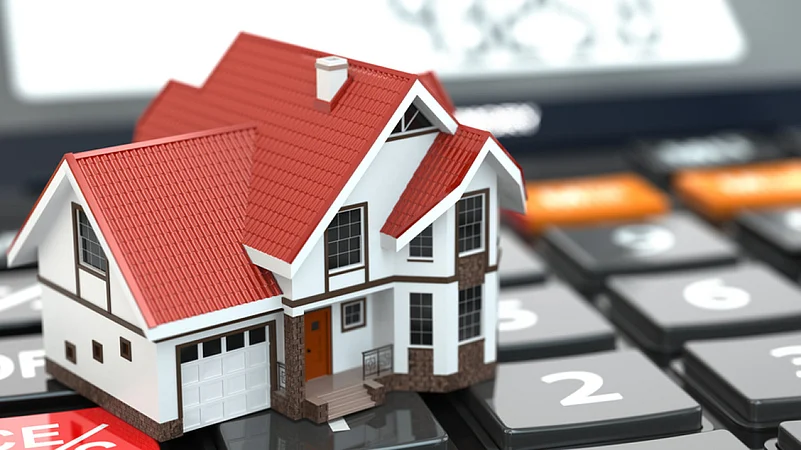Housing sales mostly declined during the first and the second wave of the coronavirus pandemic but prices did not fall in most of the cities but rather increased in some cities, according to the Economic Survey 2021-22.
The pre-Budget document also highlighted that the housing demand recovered after both the waves on the back of pent up demand, low-interest rates on home loans and reduction in stamp duty by some states.
The survey has analysed the National Housing Bank's data on change in housing transactions in Q1FY21 (first COVID-19 wave) and Q1FY22 (second COVID-19 wave) over the pre-pandemic levels of Q1FY20. It also looked into changes in the housing prices index during this period.
Advertisement
"It can be broadly observed...that the response of housing transactions to COVID-19 shock is much higher than the response of housing prices. This implies that shocks to housing sector adjust more through changes in transactions than prices," the survey said.
As price response remains relatively lower than the response of transactions, the survey noted that transactions are a better indicator to gauge sentiments in the housing market.
"While house transactions mostly declined during the COVID-19 shocks, their prices did not fall in most of the selected cities, some even increased," it added.
Unlike the decline in quarterly housing transactions during the first and the second waves of the pandemic, the impact of COVID-19 shock on the prices of residential properties was not uniform across the cities.
Advertisement
During the first COVID-19 wave, housing prices increased in cities such as Gandhinagar, Ahmedabad, Hyderabad, Thane, Mumbai, Kolkata, Pune and Bengaluru over the pre-pandemic level. The housing prices decreased in Delhi, Noida and Ranchi.
Similar trends were also visible during the second COVID-19 wave as compared to the pre-pandemic level.
Housing prices in cities such as Ahmedabad, Hyderabad, Gandhinagar and Ranchi continued to increase despite the COVID-19 shocks.
Between the two pandemic waves, from June 2020 to April 2021, the survey said that the housing transactions recovered swiftly, as quarterly purchases crossed even the pre-pandemic levels for all the selected cities.
"This boost in housing demand is possibly because of pent up demand and measures taken by the government to increase affordability. The number of unsold residential units have also witnessed significant drops during the second wave of the pandemic," it added.
Elaborating more on the housing market since the outbreak of the pandemic, the survey said residential property market was affected by COVID-19 induced restrictions through both supply and demand channels.
"Amidst initial COVID-19 restrictions, not only construction of new houses slowed down, but launch of new housing projects also got delayed. With the loss of income, uncertainty about future income, and stay-at-home orders, home buyers delayed their housing purchases," the survey said.
Advertisement
After the initial COVID-19 induced restrictions were removed, the transactions in housing properties increased significantly, possibly because of pent up demand and improvement in affordability in response to measures taken by government during the pandemic, the survey noted. Measures taken by the government include lower interest rates, reduction in circle rates, and cut in stamp duties, that made houses affordable to buyers.
Besides, several major banks, mortgage companies, and housing finance companies have significantly reduced their interest rates on home loans, that fuelled the revival in housing demand.
During the second COVID-19 wave, transactions of housing properties were once again impacted adversely, but not as much as it was seen during first wave of the pandemic (April 2020-June 2020).
Advertisement
Housing loans, the largest constituent of personal loans, registered a growth of 8 per cent in November last year.
The survey also gave an update on the Pradhan Mantri Awas Yojana – Gramin (PMAY-G) programme and highlighted that 33.99 lakh houses were completed in 2020-21 and 26.20 lakh units as on November 25, 2021.
For the Pradhan Mantri Awas Yojana – Urban (PMAY-U), the survey noted that 14.56 lakh houses were completed in FY21. In 2021-22, 4.49 lakh houses were completed till December 2021.
The PMAY-G scheme was launched in November 2016. It envisages ‘Housing for All by 2022’ through a robust monitoring mechanism and improved scheme architecture. It aims to provide assistance for the construction of 2.95 crore houses.
Advertisement
During the first phase of the scheme from 2016-17 to 2018-19, one crore houses were taken up. Under phase II, assistance is being provided for the construction of the remaining 1.95 crore houses in 2019-20 to 2021-22.
Through convergence with the other government schemes, PMAY-G also addresses basic needs such as the construction of toilets, piped drinking water, electricity connection, LPG gas connection and 90/95 person-days of unskilled labour from MGNREGS.
"As on 18th January 2022, 2.17 crore houses have been sanctioned and 1.69 crore houses completed against a target of 2.63 crore houses till 2021-22. Under PMAY-G, landless beneficiaries are accorded the highest priority in allotment of houses," the survey said.
Advertisement
As of January 18, 2022, the states/UTs have identified 4,46,058 landless beneficiaries in the Permanent Wait List of PMAY-G, out of which 2,05,847 (46 per cent) have been provided with land by the states/UTs concerned.















 Just one email a week
Just one email a week